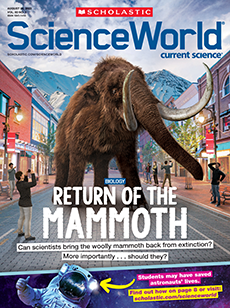Every time you watch a video on YouTube, flip through the pages of a book, or listen to the twang of a steel guitar, you have Asian American, Native Hawaiian, and Pacific Islander (AANHPI) innovators to thank. They helped create these and many other inventions we can’t live without today.
Throughout history, people from Asia and the Pacific—as well as Americans with ancestral ties to those regions—have made great strides in science, technology, and the arts, says Kevin Nadal, a psychologist at the City University of New York. Unfortunately, says Nadal, the contributions of Asian, Native Hawaiian, and Pacific Islanders often go unnamed. To combat this erasure, he says, it’s important to share the stories of people from these communities.
The term AANHPI includes people from more than 40 countries in Asia and 2,500 islands in the Pacific Ocean—all of which have their own unique cultures. From surfing to video calls, advancements made by AANHPI inventors have changed the world. Read on to learn more about some of the incredible inventions created by people from Asia, Hawaii, and the Pacific Islands.
You probably watch videos on YouTube, flip through the pages of books, and listen to music from steel guitars. When you do, you can thank Asian American, Native Hawaiian, and Pacific Islander (AANHPI) inventors. They helped create these and many other inventions. Today we can’t seem to live without them.
Kevin Nadal is a psychologist at the City University of New York. He says that people from Asia and the Pacific have made great strides in science, technology, and the arts throughout history. So have Americans with ancestors from those regions. Sadly, the contributions of Asian, Native Hawaiian, and Pacific Islanders often go unnamed, says Nadal. They shouldn’t be overlooked. So it’s important to share the stories of people from these communities, he says.
The term AANHPI includes people from more than 40 countries in Asia and 2,500 islands in the Pacific Ocean. All these places have their own unique cultures. And AANHPI inventors have created everything from surfing to video calls. Their ideas have changed the world. Read about some of the incredible inventions by people from Asia, Hawaii, and the Pacific Islands.

